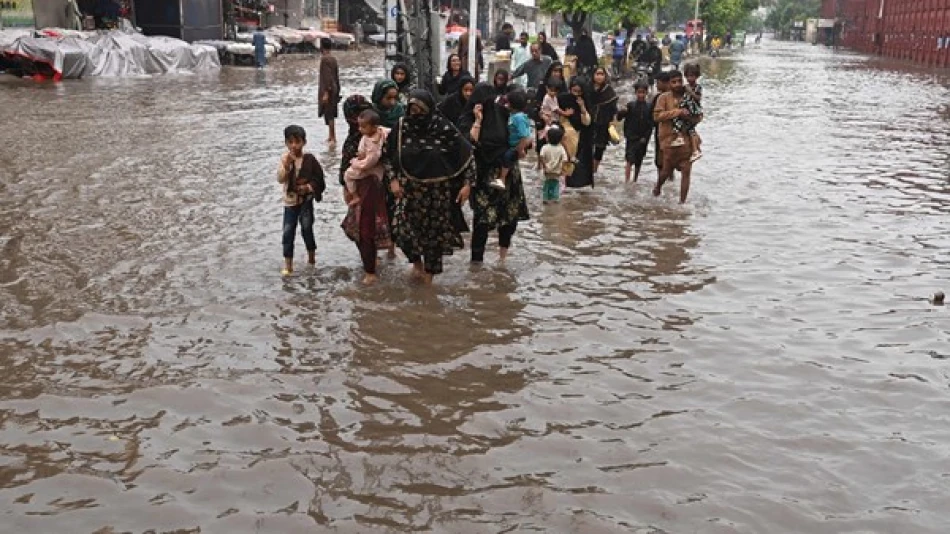
Pakistan Braces for Widespread Rainfall and Severe Flooding
Pakistan Braces for Devastating Monsoon Surge as Climate Risks Mount
Pakistan faces another severe monsoon wave starting Monday, with meteorologists warning of widespread flash flooding across northern and central regions from August 4-7. The alert comes as the country remains vulnerable to extreme weather events that have repeatedly devastated its economy and displaced millions in recent years.
Geographic Impact and Regional Variations
The Pakistan Meteorological Department forecasts heavy rainfall across multiple provinces, with Azad Jammu and Kashmir and Gilgit-Baltistan expected to bear the brunt of the downpours. These mountainous regions face particular risks due to their terrain, which can channel rainwater into deadly torrents within hours.
Khyber Pakhtunkhwa will likely experience the most volatile conditions, with strong winds and thunderstorms accompanying the heavy rains. Meanwhile, southern provinces Sindh and Balochistan may see scattered but intense rainfall on August 6, though the precipitation pattern there appears more dispersed.
Economic Vulnerabilities Exposed
This monsoon surge threatens Pakistan's already fragile economic recovery. The country is still rebuilding from the catastrophic 2022 floods that submerged one-third of the nation, caused $30 billion in damages, and affected 33 million people. With Pakistan currently navigating an IMF bailout program, another major climate disaster could severely strain government resources and delay economic stabilization efforts.
Agricultural Sector at Risk
Pakistan's agriculture-dependent economy faces immediate threats from potential crop damage. The timing coincides with critical growing seasons for cotton and rice—two of the country's major export commodities. Flash flooding in low-lying areas could devastate these crops, potentially worsening food security and export earnings when the nation desperately needs foreign currency.
Regional Climate Pattern Intensification
This monsoon warning reflects a broader trend of intensifying weather patterns across South Asia. Pakistan has experienced increasingly erratic monsoons over the past decade, alternating between severe droughts and devastating floods. Climate scientists attribute this volatility to changing ocean temperatures and shifting atmospheric circulation patterns.
Unlike neighboring India, which has developed more robust early warning systems and flood management infrastructure, Pakistan's disaster preparedness remains limited by resource constraints and institutional capacity gaps.
Infrastructure and Preparedness Challenges
Pakistan's flood management infrastructure struggles to cope with extreme weather events. Many drainage systems date back decades and cannot handle the volume of rainfall that modern monsoons deliver. Urban areas like Karachi and Lahore regularly experience severe flooding even from moderate rainfall, highlighting the urgent need for infrastructure upgrades.
The government's disaster response capabilities will face another critical test, particularly in remote mountainous regions where rescue operations become extremely challenging during severe weather. Emergency services are already stretched thin from ongoing economic pressures and previous disaster recovery efforts.
Long-term Climate Adaptation Imperative
This latest monsoon threat underscores Pakistan's position as one of the world's most climate-vulnerable nations despite contributing less than 1% of global carbon emissions. The country needs substantial international climate finance and technical assistance to build resilient infrastructure and early warning systems capable of protecting its 230 million citizens from increasingly severe weather events.
 Layla Al Mansoori
Layla Al Mansoori







